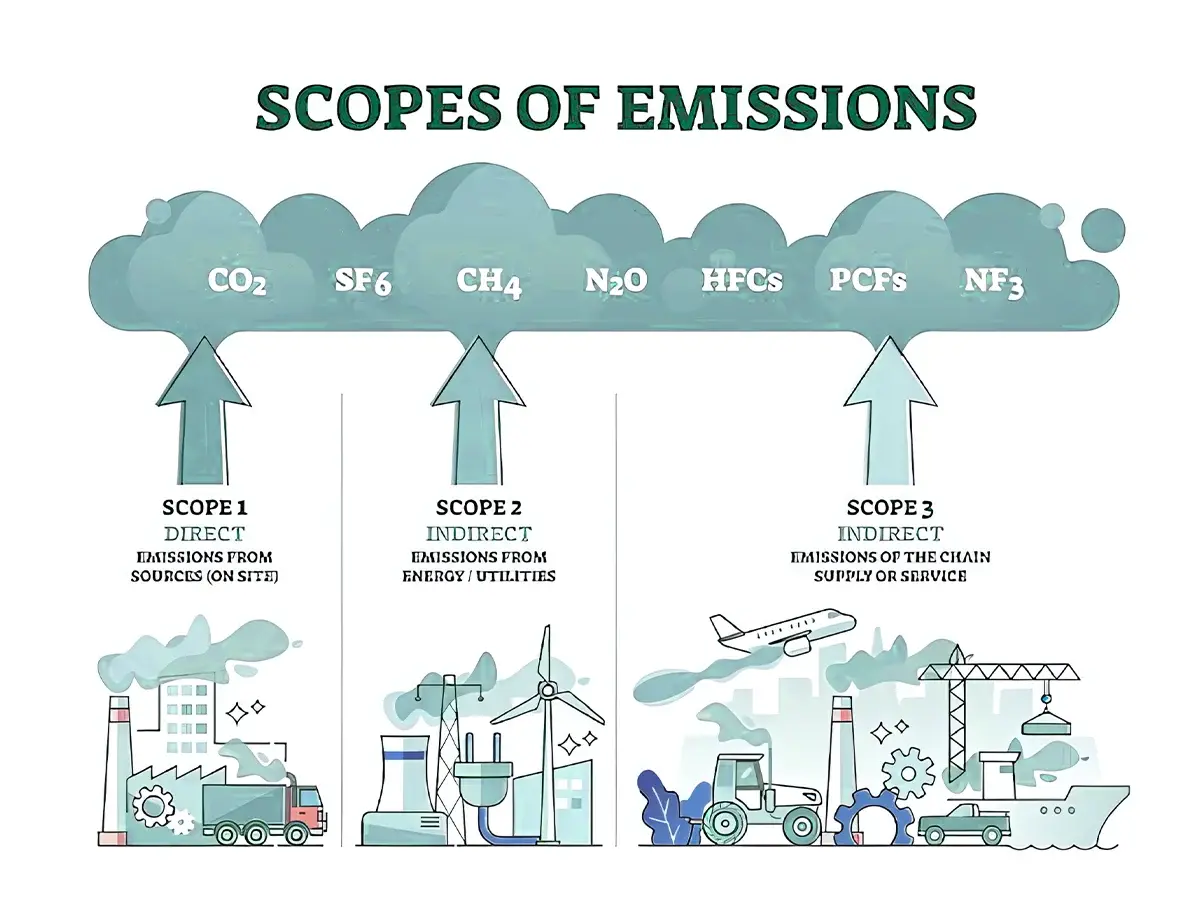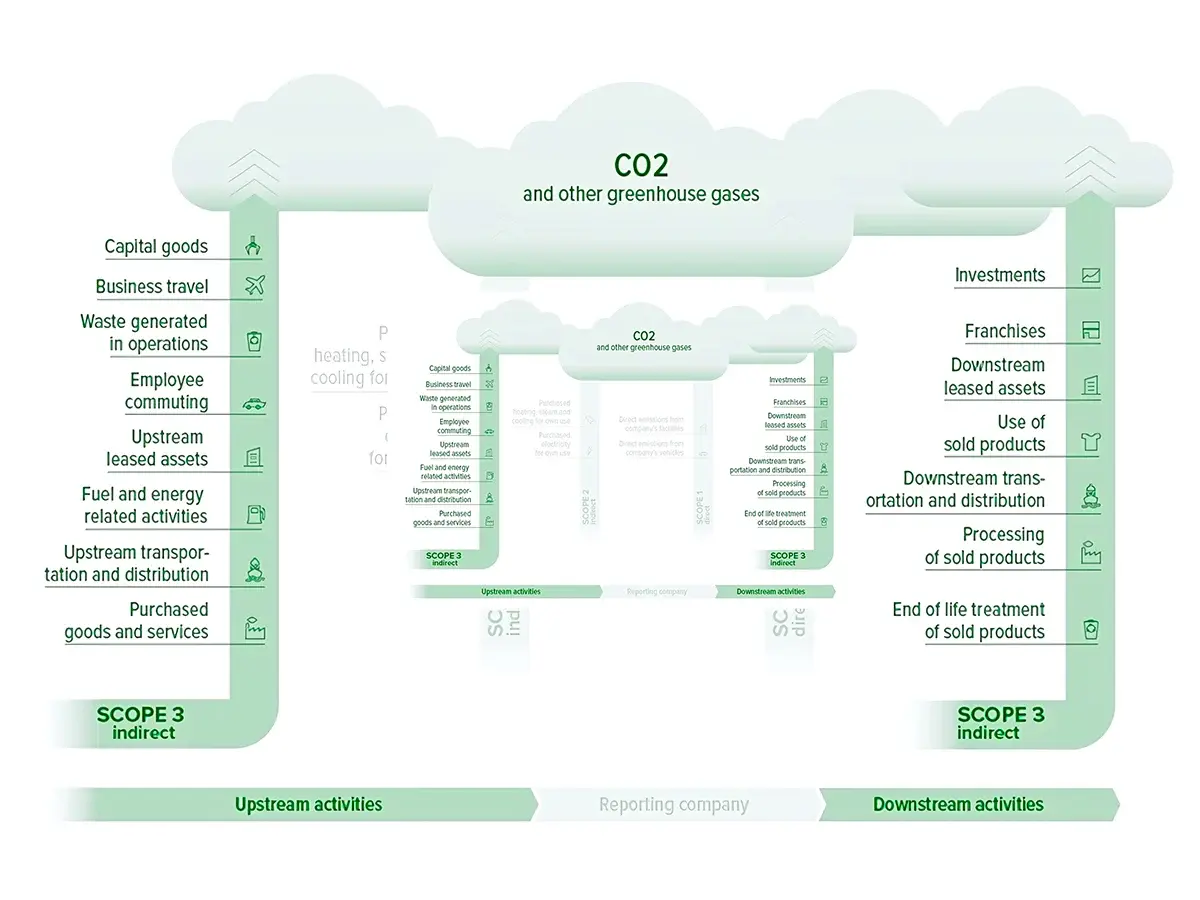For companies committed to comprehensive carbon accounting, scope 3 emissions—indirect emissions that occur throughout the value chain—present both the biggest challenge and the biggest opportunity to have an impact. The Greenhouse Gas (GHG) Protocol divides Scope 3 into 15 categories, but due to the complexity of the data and the wide range of activities involved, some of these categories are notoriously more difficult to quantify than others.
In order to help businesses navigate the complexities and improve the accuracy of their overall footprint, this article provides practical guidance on how to calculate emissions from some of these more difficult Scope 3 categories.

The Challenge of Data-Intensive Scope 3 Categories
Scope 3 categories such as “Category 1: Purchased Goods and Services,” “Category 11: Use of Sold Products,” and “Category 12: End-of-Life Treatment of Sold Products” are especially daunting. They often represent a significant portion of a company’s Scope 3 emissions, but they require a lot of data collection, specific assumptions, and specific computation methods. Because of the vast number of suppliers, the wide range of products, or the unpredictability of consumer behavior, precise measurement may seem overwhelming.

Deep Dive: Calculating Emissions from Purchased Goods and Services (Category 1)
This category includes all upstream (cradle-to-gate) emissions from the production of goods and services that the reporting company purchased or obtained during the reporting year. For many companies, especially those in the manufacturing industry, this is usually the largest Scope 3 category.
Common Calculation Methods:
-
Spend-Based Method:
- How it works: The economic value of the goods or services is multiplied by the industry-average emission factors (e.g., emissions per dollar spent) to determine emissions.
- Benefits: Provides a comprehensive overview and, with procurement data available, is reasonably easy to implement.
- Cons: It is the least accurate since it is based on averages and ignores supplier-specific performance.
-
Average-Data Method:
- How it works: The average-data method works by multiplying the mass or other relevant unit of purchased goods or services by the average (secondary) emission factors for those goods or services (e.g., kg CO2e per kg of steel).
- Benefits: It is more accurate than spend-based if high-quality average data is available.
- Cons: More precise procurement data, like material quantities, is required.
-
Supplier-Specific Method:
- How it works: Obtain the cradle-to-gate GHG emission data for every product directly from suppliers.
- Benefits: It is the most accurate since it depicts the supplier’s actual performance.
- Cons: Can be very data-intensive and is dependent on supplier engagement and capability.
Helpful Tip: After determining high-impact purchasing categories using a spend-based approach, give priority to communicating with significant suppliers or using average-data techniques for these “hotspots.”
Deep Dive: Calculating Emissions from Use of Sold Products (Category 11)
This category includes emissions from the use of goods and services sold by the reporting company. Businesses that manufacture products that consume energy (such as electronics, automobiles, and appliances) or release emissions during operation (such as industrial gases and fuels) should pay particular attention to this.
Crucial Elements in the Calculation:
- Product Lifespan: Determine the total operational lifespan of the products.
- Profile of Usage: Learn how consumers typically use products (e.g., fuel efficiency, hours of operation per year). This may require market research or assumptions.
- Energy Use and Direct Emissions: Calculate the product’s total energy consumption or the number of direct emissions it will produce.
- Emissions-influencing factors: Use the proper emission factors for direct emissions or energy consumption (such as grid electricity factors).
A useful tip is to concentrate on large product lines with high emissions during use. To make logical usage assumptions, create user personas or use industry studies. All assumptions should be clearly documented.
Deep Dive: Calculating Emissions from End-of-Life Treatment of Sold Products (Category 12)
Emissions from the treatment and waste disposal of products sold by the reporting company at the end of their useful lives fall under this category.
Important Factors in Calculation:
- Methods of Disposal: Calculate the percentage of products that are disposed of using various techniques (e.g., landfill, incineration, recycling). This frequently necessitates making assumptions based on the kind of product or local waste management procedures.
- Disposal Emission Factors: For every disposal technique, use a different emission factor (e.g., CO2 from incineration, methane from landfills).
- Product Composition: End-of-life emissions will be influenced by the product’s material composition.
Use information about product components and standard disposal methods for comparable products as a practical tip. Over time, design for recyclability and disassembly can have a big impact on lowering these emissions.
Techniques for Increasing Precision in Complicated Categories
The process of addressing these categories is iterative. Here’s how to gradually increase accuracy:
- Setting priorities: To determine which Scope 3 categories and subcategories are most important, use preliminary screenings (such as spend-based methods). There, concentrate your efforts on gathering detailed data.
- Cooperation with Suppliers: To get more precise emissions data, speak with important suppliers directly. For Category 1, this is frequently the most efficient method of increasing accuracy.
- Make use of benchmarks and industry averages: Use reliable industry-average data, life cycle assessment (LCA) databases, or published emission factors in the absence of primary data. Don’t forget to cite your sources.
- Iterative Improvement: As methods change, supplier engagement increases, and data quality improves over time, make plans to enhance your Scope 3 inventory. This is not a one-time task; it is a journey. If you’re curious to dive deeper, I’ve written a more detailed breakdown of Scope 3 over on the QuickESG (AI powered ESG reporting tool) article. Check it out here: Scope 3 Explained.
Conclusion
Emissions from complicated Scope 3 categories, such as purchased goods, product use, and end-of-life treatment, can be difficult to calculate, but doing so is necessary to fully comprehend a company’s overall carbon footprint and to pinpoint important areas for decarbonization. Businesses can gradually improve their Scope 3 inventories by beginning with reliable estimation techniques, giving priority to hotspots, interacting with suppliers, and pledging to continuously improve. In addition to boosting reporting credibility, this diligence identifies chances for cooperation and innovation throughout the value chain, which propels significant climate action.






